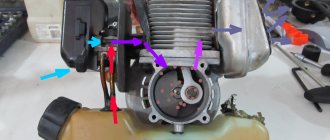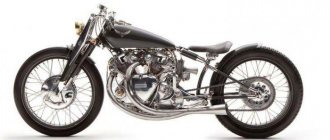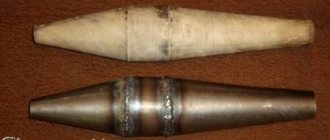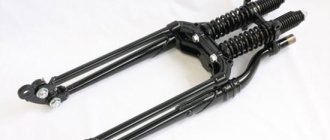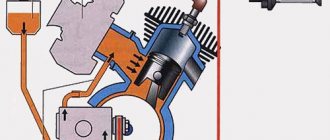Almost every owner of a private home has gasoline-powered assistants that make it easier to perform various tasks - cutting grass, sawing trees, removing snow. The units under consideration are dominated by internal combustion engines created by Etienne Lenoir in 1860. Modern petrol tools are equipped with internal combustion engines, which are divided into two main types - two-stroke and four-stroke. We will learn in detail from the material what is the difference between a two-stroke engine and a four-stroke engine, and what other types of gasoline engines are there.
What is an internal combustion engine on gas-powered tools?
An internal combustion engine is a unit that transforms fuel into mechanical energy. Today, internal combustion engines are used everywhere - from tools to cars and other types of equipment. The principle of operation of the internal combustion engine is due to the fact that a combustible mixture based on gasoline with air is supplied to the design. The carburetor is responsible for creating the desired consistency of the combustible mixture.
The combustible mixture is fed into the cylinder, where it is ignited. The combustion of the mixture creates useful energy that is removed from the crankshaft in the form of rotational movements. The main advantage of the internal combustion engine is that it has high power when compared with electric motors. Most gas-powered tools—trimmers, brush cutters, walk-behind tractors, chainsaws, etc.—are equipped with two-stroke internal combustion engines. More powerful petrol tools are equipped with a four-stroke internal combustion engine. What is the difference between two-stroke and four-stroke engines, what operating principle do they have, as well as their pros and cons are described in the material.
Advantages
- No heavy flywheel. Thanks to ignition every time the crankshaft is turned, the power plant runs smoothly;
- Light weight. Lack of a gas distribution mechanism, heavy flywheel, oil-filled crankcase, etc. the motor has a small mass. This allows the installations to be used in various hand-held devices;
- Simplicity of design. The absence of parts of the gas distribution mechanism allows repairs to be carried out by a person with minimal technical knowledge;
- Low cost of major repairs. A small number of parts profit reduces the cost of major repairs;
- Small sizes. The dimensions of two-stroke engines allow them to be installed on small equipment;
- Power. Due to the ignition of the air mass with fuel at each turn of the crankshaft, the engine has high power;
- High mechanical efficiency. The minimum number of components helps to increase mechanical efficiency.
What is called a stroke in an internal combustion engine?
A stroke on an internal combustion engine is an action that takes place inside the mechanism. Moving the piston in the upper or lower direction is the stroke. Moreover, one stroke is when the piston moves upward, performing the corresponding work. The downward movement of the piston, which returns from the force generated by the combustion of fuel, is called the power stroke.
The first stroke from which the engine begins to operate is filling the cylinder with the fuel mixture. The next stage is the compression of the incoming mixture into the engine. Next, ignition occurs, and finally the removal of burnt gases. These are the four strokes that are performed in four-stroke engines. The crankshaft in four-stroke units makes two revolutions with one ignition of the fuel.
Two-stroke engines operate in two cycles - transporting the fuel mixture into the cylinder with its subsequent ignition, and removing exhaust gases from the cylinder. In two-stroke units, the crankshaft makes one revolution when burning one portion of the fuel mixture.
This is the main difference between the units under consideration and each other.
2-stroke and 4-stroke internal combustion engines are available in gasoline and diesel fuel types. To find out in detail what advantages and disadvantages are available in the 2- and 4-stroke engines under consideration, let us consider their design and operating principle.
conclusions
But what will “four strokes” give to an ordinary, poor water motorist, relaxing on the river on fine, quiet weekends, and owning a watercraft designed for 30-60 hp engines? Nothing but the feeling of lightening your pocket from the extra money. No matter how stylish and prestigious the “economically expensive” purchase may look on the transom.
Thus, choosing a 4-stroke outboard motor for short seasonal runs, if it is significantly more expensive than a 2-stroke of the same power, looks unprofitable and irrational. At least for those who count money.
Source
Engines in which the working cycle is completed in 2 strokes (1 revolution of the crankshaft) are called two-stroke; in 4 strokes (2 revolutions) - four-stroke. The work cycle includes the following stages:
A stroke is a displacement of the piston in one direction (upward or downward). The revolution of the crankshaft at which the gases that have been burned expand and perform useful work is called the working piston stroke.
Two-stroke internal combustion engine, its design features and description of the operating principle
Most chainsaws and brush cutters are equipped with push-pull drive units. Two strokes are the stage of compression of the fuel mixture and the power stroke of the piston (when it goes down). To understand how a two-stroke engine differs from a four-stroke engine, let’s first consider the structure of the motor. The main parts of an engine are the cylinder, piston, crankshaft and connecting rod. The spark plug is responsible for burning the fuel, and the mixture is transported and gases are removed through the intake and exhaust channels. The design diagram of a two-stroke engine is shown in the photo below.
A two-stroke engine has a simplified structure in contrast to a four-stroke engine. Its operating principle is simple, and begins with the piston moving from bottom to top dead center. There are three holes in the cylinder walls - inlet, outlet and purge channel. The inlet is located lower than the outlet, and the purge is located between them, as shown in the photo above. The inlet and purge channel is connected to the crank chamber. Below is a detailed description of the principle of operation of the internal combustion engine.
First beat.
Initially, fuel from the carburetor is transported to the crankshaft chamber. Through the purge hole, the pre-entered fuel-air mixture is sucked into the cylinder from the crankshaft chamber. The supply of the mixture stops when the piston closes the hole in the purge channel. Next, the movement of the piston closes the exhaust channel. Part of the fuel-air mixture goes into the exhaust channel. After closing the exhaust channel, the process of compression of the combustible mixture begins. This mixture consists of gasoline, oil and air. When the piston reaches top dead center, the mixture ignites due to the creation of a spark from the spark plugs.
At the moment when compression occurs in the upper part of the cylinder, a vacuum is created in the lower part of the crankshaft chamber. This vacuum allows the next portion of fuel to be sucked from the carburetor for the next ignition. The fuel sucked into the chamber of the crank mechanism simultaneously lubricates the crankshaft and connecting rod. That is why special oil for a two-stroke engine is added to the combustible mixture. Two-stroke engines do not have an oil sump, which is one of their main differences from four-stroke engines. All these processes are carried out in one clock cycle.
Second beat.
The burnt gases push the piston down, thereby achieving a working stroke. When the exhaust port opens, exhaust gases exit through it and enter the muffler through a channel. The piston moving down creates pressure in the crankshaft chamber. Due to this pressure, the fuel-air mixture of the TPS is squeezed out of the crankshaft chamber into the purge channel. The next portion of TPS is pushed into the cylinder immediately when access to the purge hole is opened. When the working chamber of the cylinder is filled with a portion of the fuel mixture, the remaining exhaust gases are simultaneously displaced. The second stroke ends when the piston reaches bottom dead center.
The visual process of a two-stroke engine is shown in the animated image below.
This type of internal combustion engine has its advantages and disadvantages, which are described below. Knowing the structure and operating principle of a two-stroke engine, let’s look at four-stroke engines.
Criterias of choice
You need to choose an engine, taking into account, first of all, the permissible characteristics of the boat and the conditions in which it will be used. Typically, vessels are used for fishing and walking on the water with friends.
If the bite site is located at a short distance, then the speed provided by the engine is not of great importance. To get to the center of a calm body of water and fish, you can use a low-power Honda, Mercury, or Suzuki engine.
It is more economically profitable to buy a lightweight engine that consumes little fuel. Such an engine has a low price, is easy to install and transport.
Those who like to ride with the wind or water ski need boats of a special design. They will require the purchase of high-power, expensive engines that consume a lot of fuel.
Power selection
The technical passport of the vessel specifies the maximum power that the engine can have. You cannot use a power unit that will have a power exceeding this limit.
If you plan to slowly move around a body of water, you can buy an engine with any power ratings. For this reason, fishermen often purchase 2-5 hp engines. With. This is enough to replace the oars with a motor, ensuring a quiet ride for a boat with a couple of people on board.
If you want to move through water at high speed, buy a high-power power unit. This is especially true if you intend to go on planing. The required power depends on the design features of the vessel, the total weight of the boat with the engine, equipment and passengers.
Planing is the rapid movement of a vessel in which the hull does not cut the water, but glides along the surface of the reservoir. The main sign of planing is the bow of the ship raised up.
There is a simple formula by which you can determine the engine power indicators required for planing. It is necessary to calculate the weight of the vessel, equipment, people on board, and the approximate weight of the engine. To reach the glider, the proportion must be observed: for 110 kg of weight you need 5 liters. With. power. If this proportion is observed, it means that the ship can plan on water.
Legal subtleties
If you install an engine more powerful than 10 hp on your own boat. pp., then you will need to register with the GIMS, obtain a driving license, and periodically perform a technical inspection. This is one of the reasons why anglers prefer not to purchase high-power units. 9 l. With. enough to reach a speed of 10 km/h.
Registration with GIMS cannot be avoided for those who want to ride at speed. This includes glider enthusiasts who require an engine with at least 15 horsepower. With.
Number of cycles
The advantages of two-stroke engines include low cost, low weight, and no need for special maintenance. If you have at least a little knowledge of auto mechanics, then you can easily learn how to repair an engine yourself.
Two-stroke engines are optimal for long-term loads in harsh conditions and are not particularly demanding on fuel.
Among the disadvantages, it is worth noting the increased noise during operation of the unit. In addition, two-strokes consume a lot of fuel, since about 25 percent of the fuel simply does not burn. Another disadvantage is the toxic exhaust produced by the two-stroke unit in large quantities. To reduce their quantity, it is necessary to mix fuel and oil fluid.
Four-stroke engines produce much less noise during operation than two-stroke engines. The owner of the vessel rarely fills with fuel, since it burns completely in the engine. The power unit produces a small amount of exhaust; there is also no need to make a mixture; the oil liquid is poured separately from the fuel.
The main disadvantage is the cost. Four-stroke engines cost about 15 percent more than two-stroke engines.
Repairing a four-stroke engine with your own hands is possible, but quite difficult. To repair certain engine models, it is necessary to perform computer diagnostics.
Also, four-stroke units weigh more. For example, a two-stroke “5 M” weighs 20 kg, while a four-stroke “F5 M” weighs 25.
Engine weight
When choosing a boat engine, you need to consider its weight. The weight of the unit determines the method of its transportation, installation, adjustment, and storage. Low-power engines (from 2 to 3 hp) have a mass of up to 20 kg. One person can load and unload them from the car and install them on the ship himself. More powerful engines (from 10 hp) have a weight of 30 kg. Because of this, they need to be transported and installed by two people.
Four-stroke engine, its structure and how it works
Four-stroke units have a more complex structure, but at the same time they are characterized by high performance and a long service life. Their work consists of 4 cycles, as mentioned above. This is the intake stroke of the fuel mixture, its compression, power stroke and release of burnt gases. Unlike two-stroke engines, 4-stroke engines have an oil sump, through which rotating and rubbing parts are lubricated. To understand what we are talking about, below is a diagram of the structure of a four-stroke internal combustion engine.
The diagram above shows the main structural elements of a 4-stroke internal combustion engine:
- Cylinder - the base in which the piston moves
- The piston is the main working element of all internal combustion engines. The piston has rings through which the fuel mixture is compressed
- Connecting rod - connecting element between the crankshaft and the piston
- Crankshaft - located in the crank chamber
- Connecting rod pin - connecting element between the crankshaft and connecting rod
- Combustion chamber - in this chamber the fuel is compressed and ignited
- Intake valve - when it opens, the fuel mixture from the carburetor enters the combustion chamber
- Exhaust valve - opens to remove exhaust gases from the combustion chamber
- Spark plug - ignites the fuel mixture
The operating principle is similar to two-stroke engines, but there are some distinctive features. Let us next consider the principle of operation of a four-stroke engine in cycles.
First beat.
The air-fuel mixture is transported into the combustion chamber when the intake valve opens. The piston is at top dead center. The valve is opened by means of the cams of the gas distribution mechanism. The fuel mixture is sucked in until the piston reaches bottom dead center. The crankshaft makes half a revolution.
Second beat.
It begins with the piston moving from bottom dead center to the top. In this case, the fuel-air mixture received at the previous stage is compressed. Once the piston reaches top dead center, a spark is generated by the spark plug. Along with the first stroke, the crankshaft makes one revolution.
Third beat.
The pressure generated by the combustion of the mixture ensures that the piston moves from top dead center to bottom. This movement of the piston after combustion of gases is called the power stroke. The exhaust gases in the third stage remain in the chamber until the piston reaches bottom dead center. After this, the final stage begins.
Fourth measure.
The piston moves from bottom to top dead center, thereby releasing the combustion chamber from the exhaust gases contained in it. To do this, the exhaust valve opens, which is also connected to the gas distribution mechanism using a cam. After this, the cycle repeats.
An animated representation of the working principle of a four-stroke engine is shown in the diagram below.
Four-stroke engines are more advanced, durable and reliable compared to two-stroke engines.
Tuning a two-stroke engine
Any two-stroke engine has the ability to boost. An increase in power for the same volume is justified in sports, and in everyday use the engine becomes more flexible and more economical. Main ways of improvement:
- Increase the diameter of the outlet and ensure that it opens for as long as possible. This allows the maximum amount of gases to be released. This increases the engine's traction capabilities and torque.
- Ensure effective purging. To do this, you can increase the diameter of the intake window, then the combustible mixture will not linger in the crankcase and timely injection into the combustion chamber will be ensured.
- The use of a vortex diffuser on the carburetor, which supplies a larger amount of fuel mixture at the same time. Along with it, it is advisable to use a zero-resistance air filter.
- Installation of an exhaust resonator, calculated for a specific engine size. Such a device returns part of the fuel mixture back into the cylinder through the outlet.
- Refinement of the connecting rod and piston group, its lightening and careful balancing. Valves and channels must be ground in and free from burrs (burrs), braking and swirling flows. This reduces cylinder filling and reduces power.
- Application of injection systems and regulation of valve timing. This allows you to more accurately dose the amount of fuel supplied and reduce the loss of the combustible mixture during cylinder purging.
- Installation of pressurization systems. These are usually compressor-type superchargers, and a two-stroke diesel engine can be fitted with a traditional turbocharger. With its help, the amount of air entering the cylinders increases, and accordingly, the amount of fuel can be increased.
The main differences between two-stroke and four-stroke internal combustion engines
One of the main differences between the units under consideration is the presence of a gas distribution mechanism on a 4-stroke engine. There is no gas distribution mechanism on 2-stroke devices. Instead, there are holes in the cylinder walls, through which the finished fuel-air mixture is supplied, as well as exhaust gases are removed.
The timing belt not only increases the weight and size of the engine, but also significantly affects its cost. The absence of a timing belt results in the engine having only two operating cycles. The presence of channels in the cylinder walls leads to increased wear of the engine rings and piston. This is why two-stroke engines have a short service life. Next, let's look at the design differences between 2-stroke and 4-stroke engines.
- Fuel consumption - despite the fact that the two-stroke unit has a simple structure, in terms of gasoline consumption it is inferior to the four-stroke unit.
This is due to the number of cycles. While a 4-cycle unit makes 2 revolutions of the crankshaft, consuming one portion of fuel, a two-stroke engine makes only one revolution. The increase in fuel consumption is approximately 1.5 times. In addition, do not forget that the 2-stroke unit has an imperfect system, and during operation there is a loss of the fuel mixture released into the muffler. This is part of the mixture that “flies into the pipe” when the piston moves upward at the moment of compression - Fuel type - 4-stroke engines run on pure gasoline, which is mixed with air in the carburetor
. 2-stroke units operate on a mixture of oil and gasoline. The use of pure gasoline is unacceptable, which will lead to rapid failure of the cylinder-piston group - Lubrication system - many people know that it is by this principle that the units in question differ.
The 4-stroke engine has a separate lubrication system, consisting not only of a container, but also an oil pump, filters and a pipeline. The lubrication system is not interconnected with the fuel supply mechanism, which indicates not only efficiency, but also a long service life. Two-stroke engines run on gasoline and oil. The proportions for mixing gasoline with oil for chainsaws and lawn mowers are described on the website. Gasoline along with the fuel is supplied to the engine, where the mechanism is lubricated. It is worth noting that not all two-stroke engines have a common lubrication system, but there are also units with a separate mechanism, where mixing occurs automatically depending on the number of revolutions - Type of lubricants or the difference between oil for a two-stroke engine and a 4-stroke one.
For two-stroke engines, special “burning” type oils are used. This oil is mixed with gasoline and enters the crankshaft system, providing lubrication to moving parts. After this, the oil, combined with gasoline, enters the cylinder, where it ignites and burns. This oil is called two-stroke oil, and it comes in red or green. Color does not play a big role, and indicates the use of additives in the composition. Four-stroke engines run on pure gasoline, since they have a separate mechanism responsible for lubricating the crankshaft. Such engines use regular motor oil, which cannot be mixed with gasoline and poured into two-stroke units. This will lead to rapid clogging of the spark plug electrodes and failure of the internal combustion engine. It turns out that the difference between oil for two-stroke engines and four-stroke engines lies in consistency and composition. 2-cycle internal combustion engines use combustible types of oils, which lubricate the entire system before burning
Regarding the lubrication system of four-stroke engines, it should be noted that they come in two types - dry and wet sump. They differ in the method of lubrication. In the wet type, oil is supplied from the crankcase to the crankshaft. The pump pumps oil from the crankcase, which is part of the engine.
Dry sump internal combustion engines use a separate oil tank. From it, oil is pumped into the crankshaft system, ensuring lubrication of the parts. The accumulated oil is transported back to the tank using an additional pump.
Knowing the main design and fundamental differences between the mechanisms under consideration, you should understand their advantages and disadvantages, which both options have.
Dry residue
So, when asked why we should overpay for four cycles, we can answer: “It’s quiet and economical.”
Now let’s decide whether this “quiet and modest girl” is worth the cost of a wedding?
It’s easy to talk about “silence” to a person who is not familiar with the subject under discussion. Yes, at low speeds, up to 1000-1200, the four-stroke engine is quiet, and at idle it’s almost inaudible - I remember a couple of times, at first, when I tried to start the already running engine with the key.
